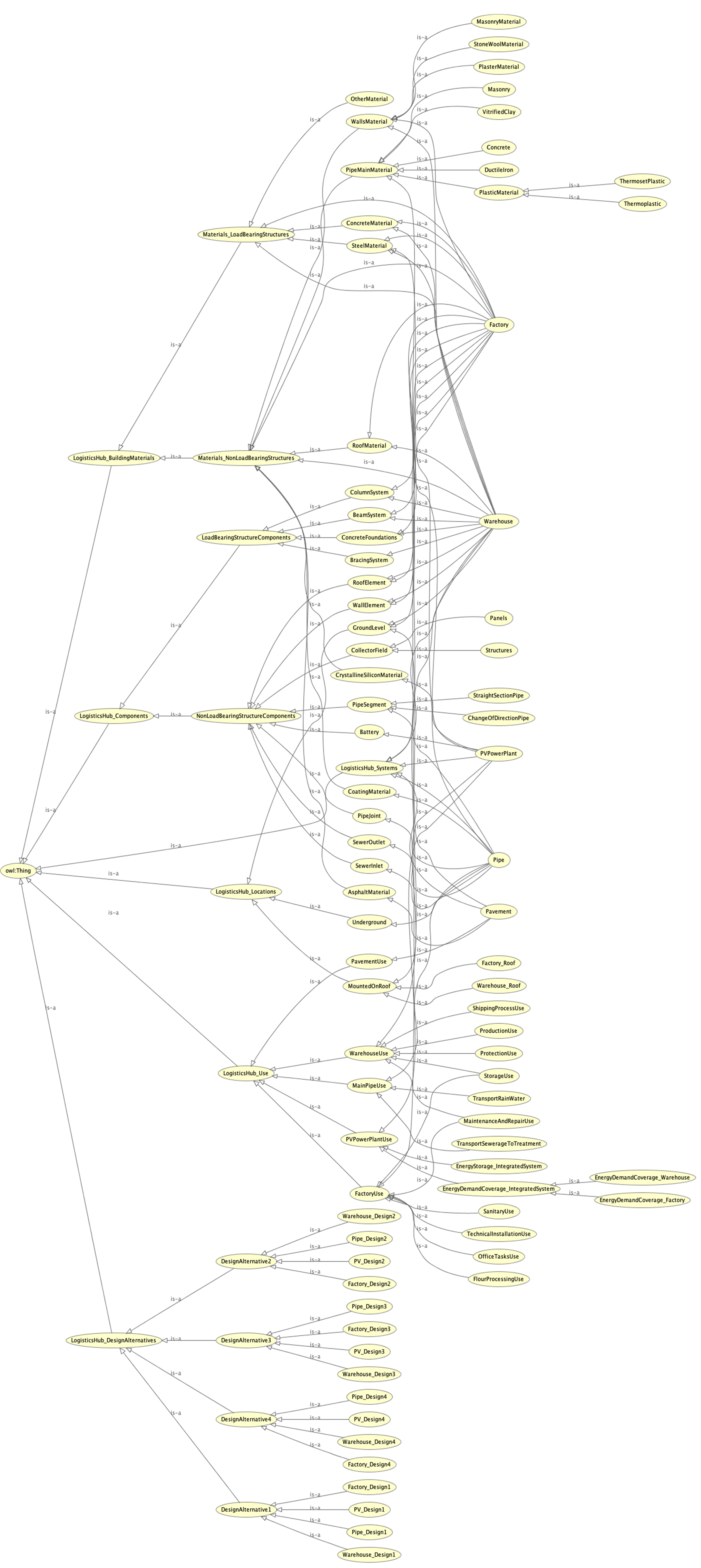Before an integrated civil system can be modelled, a thorough consideration behind the purpose and concept of the system is required. As described, the integrated system consists of a warehouse, a factory, a pipe system and a photovoltaic system. In the modern manufacturing and logistics industry sustainability and economic efficiency are core considerations. The ontology will represent the most important characteristics based on several main classes. For this purpose, the individual ontologies of the systems serve as orientation. However, the entire structure of the ontology must be rethought and created regarding the integrated concept. Therefore, new subclasses as well as properties must be added to the integrated ontology.
In the first step it was considered which integrated main classes can be created for all systems based on the individual ontologies. For this, none of the ontologies served as a template, rather the commonalities of the ontologies with respect to the class hierarchies were filtered out. Thus, the main classes for the integrated ontology could be created. Additionally, the descriptions of the relative domains and subclasses were adjusted at the beginning.
One of the first main classes of the sustainable manufacturing system is LogisticHub_BuildingMaterials. As second instance, the class LogisticHub_BuildingMaterials was divided into the subclasses Materials_LoadBearingStructures and Materials_NonLoadBearingStructures to clearly give an overview regarding the subsystem’s materials. For example, the warehouse and the factory have concrete as a load bearing material, since it is the material the foundations are produced with. Using this approach, the remaining main classes of the ontology were also created. These are the classes LogisticsHub_Systems in which all the sub-systems of the integrated product are listed, the LogisticsHub_Components in which the elements of the structure are listed carefully and the LogisticsHub_DesignAlternatives where the generated design alternatives are described based on the main parameters, which were assigned in the data properties. In addition, the main classes LogisticsHub_Locations and LogisticsHub_Use where created to give a survey about where the subsystems are located and how it is planned to implement them based on the requirements. The structure of the ontology can be seen in the figure at the bottom of this page.
Following the ontology development, the main interest is to give the customer a first overview of the concept of the system based on the integrated ontology. Thereby the ontology shall provide the basics to make the models and alternatives better understandable in the further course. In addition, the cost of materials in particular is considered in the further chapters. Therefore, the ontology in the material subclasses provides an overview of the main materials.
The following figure shows the combined ontology:
